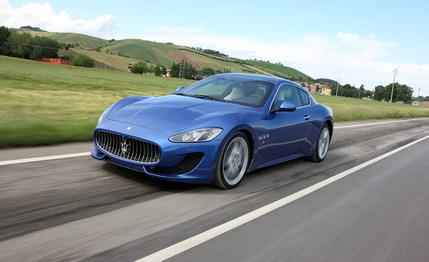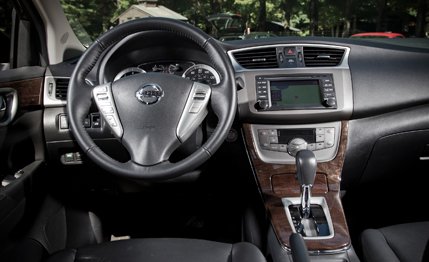 First Drive Review
First Drive Review
Maserati is beginning to act its age. Sales, build quality, and reliability have been on a steady ascent since the maker introduced the current Quattroporte in 2003. The previous decades saw Maserati lead an existence typified by exotic exteriors wrapped around temperamental hardware. But the new method seems to be working, and not just for four-doors. In 2011 alone, Maserati managed to peddle nearly 2700 GranTurismos, almost a third of them right here in the land of eagles and apple pie. To help keep the GT’s momentum, Maserati brought the coupe and convertible in for a quick makeover before the Levante SUV and sub-Quattroporte Ghibli sedan arrive next year and steal all the headlines.
Ch-ch-ch-changes
Changes to the 2013 GranTurismo Sport editions run from cosmetic touches to horsepower-increasing engine mods. First, let’s cover the aesthetics. The front fascia has been slightly tweaked for a more aggressive appearance, and a splitter resides below the familiar Maserati grille. Although the basic shape of the headlamps remains unchanged, they now include bixenon illumination, LED DRLs, and adaptive lighting control, the latter tracking the movement of the steering wheel up to 15 degrees. Side skirts come standard on the Sport, as do enlarged fender vents—referring to them as portholes makes Maserati reps bristle—to aid in the extraction of hot air from the engine bay. New mirrors, 20-inch wheels (available in four styles), and more darkly tinted taillight lenses round out the exterior revisions.
The big news inside includes entirely new leather seats with integrated headrests front and rear, a pricey proposition—crash-test certifications don’t come cheap—for a car well into its life cycle. The new seat’s bolsters deliver comfort and support in equal measure, cradling but not constricting skeletal frames with the welcome familiarity of a favorite pair of jeans. Rear-seat passengers get a nominal three-quarters of an inch or so extra kneeroom in the switch. The front seats are heated but not ventilated, and it took us a few minutes of groping to find the temperature control tucked away on the seat bottoms; it’s not visible once you are seated. There’s no missing the shiny, high-grip aluminum brake and accelerator pedals, though.

Standard technology features sprinkled throughout the leather-lined cockpit include a Bose sound system with satellite radio, iPod connectivity, and a parking warning system specifically tuned for the types of curbs found here in the States. Surprisingly, no backup camera is available yet; Maserati says its arrival is held up by an integration problem with the in-dash head unit. Options on the coupe and convertible Masers we sampled in Sonoma, California, included a faux-suede headliner ($1700), red contrasting seat stitching ($450), trident-logo headrest stitching ($625), piano black interior trim ($2500), blue anodized brake calipers ($860), and gray paint for the 20-inch aluminum wheels ($800).
Like many vehicles that debuted as coupes, the GranTurismo convertible’s design can be somewhat polarizing, opinions formed largely on your vantage point. From the outside, the convertible sits naked and vulnerable with its top down, the loss of the coupe’s elegant rear pillar and backlight lessening the drama of the vehicle’s curves, particularly the rear fenders. From the inside, however, any critiques are tempered with abundant sunshine, gentle breezes, and the sweet sound of the Italian V-8’s exhaust piped to your ears. Wind buffeting is minimal, and casual conversation at highway speeds doesn’t require the use of a bullhorn (although we’d be lying if we said it wouldn’t be fun to have one along for acts of general top-down idiocy). The GranTurismo was never a class leader in torsional rigidity, and cutting the lid off its steel monocoque doesn’t improve matters. However, empirical judgments regarding the convertible’s additional chassis twist or cowl shake were difficult to make because of the buttery smooth tarmac on our drive.